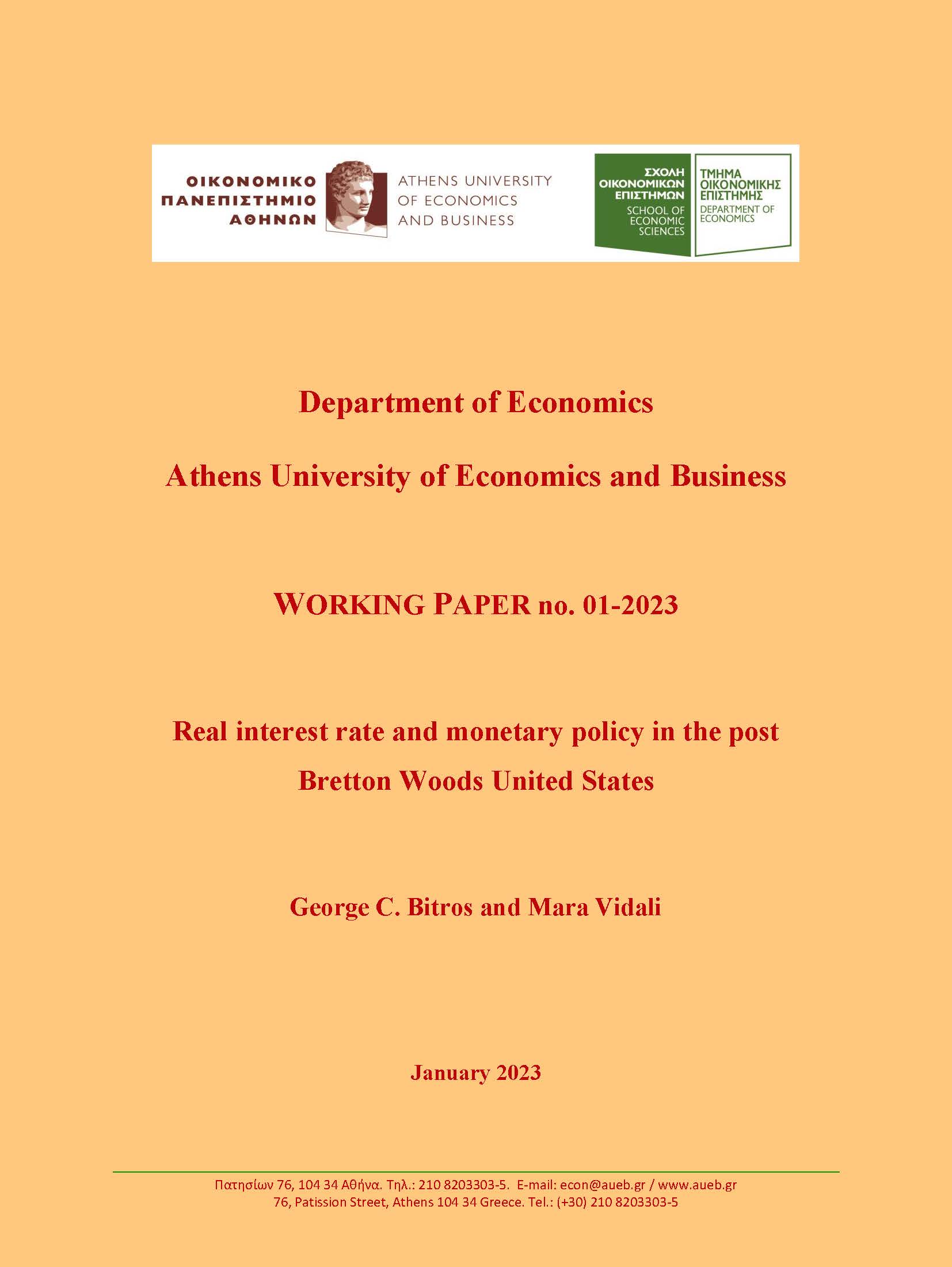Ανάρτηση Ερευνητικού Δοκιμίου no 01/23
Περίληψη
Using data for the United States over the period 1973-2019, we find that there is a long-run stable relationship showing that the real interest rate is determined by real investment, real money supply, the velocity of circulation, and the rates of wages, economic growth, technological change, and population. Moreover, upon an arbitrary shock in one of its aforementioned determinants, holding all the rest fixed, we find that the real interest rate returns to the long-run equilibrium within a few years. The estimated equation is derived by embedding monetary policy in a general equilibrium growth model of heterogeneous capital. From the latter’s theoretical analysis, we expected that some instability might show up in the data because of the negative real interest rates, twice in the 1970s and then again in the early 2010s. However, no such evidence emerged, perhaps because the bias of monetary policy at those times was away from the zero bound and the real interest rate turned negative due to unexpected but transient shocks. The same of course may not be the case if the model is tested with data after 2019, when the bias of the monetary policy reversed, driving the nominal interest rates very close to the zero bound and thus, probably, giving rise to the current signs of economic instability.
O Γεώργιος Κ. Μπήτρος είναι Ομότιμος Καθηγητής στο τμήμα Οικονομικής Επιστήμης του Οικονομικού Πανεπιστημίου Αθηνών και η Μάρα Βιδάλη είναι Μεταδιδακτορική Ερευνήτρια στο Γεωπονικό Πανεπιστήμιο Αθηνών.






 Πατησίων 76
Πατησίων 76 2108203 303
2108203 303
